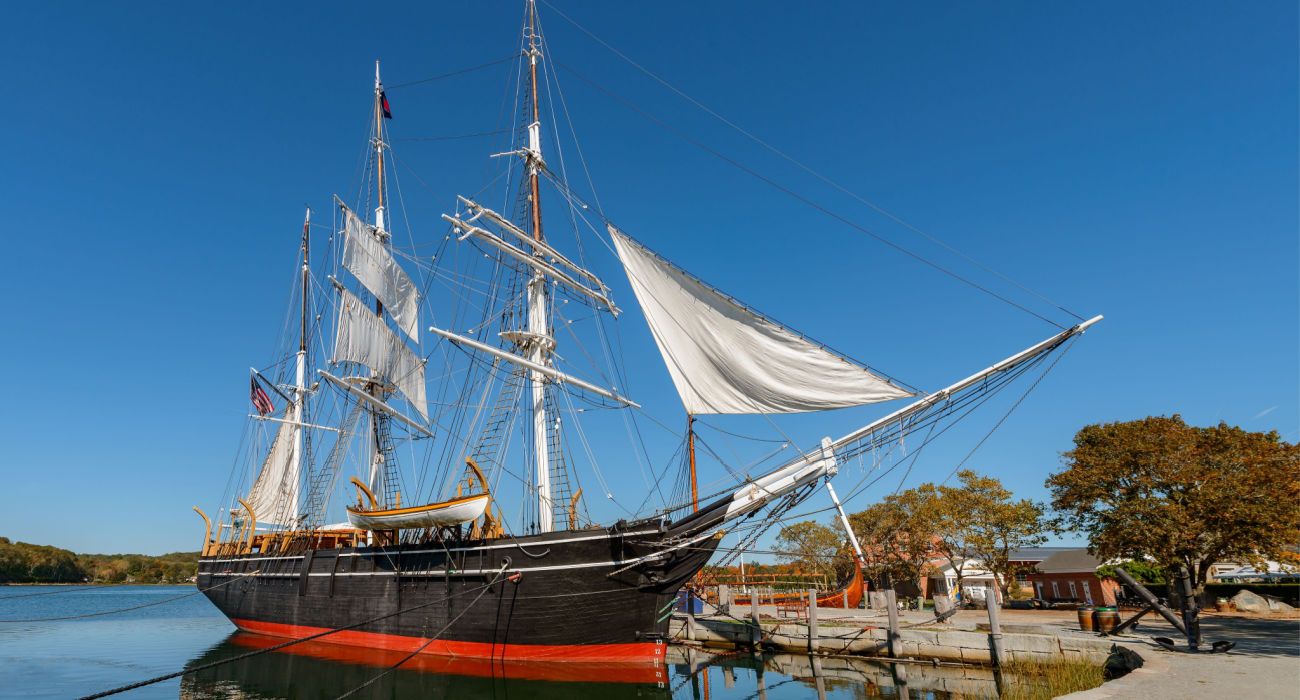Connecticut’s Historic Whaling Ports Revealed

Have you ever wondered about the rich history behind Connecticut's historic whaling ports? These ports played a crucial role in the 19th century, making Connecticut a hub for the whaling industry. Towns like New London and Mystic were bustling with activity as ships set sail in search of whales. These voyages were not just about hunting; they were about adventure, survival, and the pursuit of valuable whale oil. Today, you can still feel the echoes of that era in the museums, historic ships, and waterfronts. Visiting these ports offers a unique glimpse into a time when whaling was a way of life.
Connecticut's Historic Whaling Ports Revealed
Connecticut's coastline is dotted with towns that once thrived on the whaling industry. These ports played a crucial role in the state's history, shaping its economy and culture. Let's dive into some of the most significant historic whaling ports in Connecticut.
New London
New London was a bustling hub for whaling activities in the 19th century. Its strategic location made it a prime spot for whalers setting off on long voyages.
Custom House Maritime Museum: This museum offers a deep dive into New London's maritime history, including its whaling past. Exhibits feature artifacts, ship models, and interactive displays.
Fort Trumbull State Park: Overlooking the Thames River, this park provides a glimpse into the military history that protected the whaling ships. The visitor center has exhibits detailing the fort's role in maritime defense.
Nathan Hale Schoolhouse: While not directly related to whaling, this historic site offers insight into the broader historical context of New London during the whaling era.
Mystic
Mystic is synonymous with maritime history. Its whaling past is preserved in various attractions that draw visitors from around the world.
Mystic Seaport Museum: This living history museum is a must-visit. It features a recreated 19th-century seafaring village, historic ships, and exhibits on whaling.
Charles W. Morgan: The last wooden whaleship in the world, the Charles W. Morgan, is docked at Mystic Seaport. Visitors can tour the ship and learn about its whaling voyages.
Mystic River Bascule Bridge: While not directly tied to whaling, this iconic bridge is part of Mystic's maritime charm. Watching it open for passing boats is a treat.
Stonington
Stonington's picturesque harbor was once a bustling whaling port. Today, it offers a blend of history and scenic beauty.
Stonington Harbor Light: This lighthouse guided whalers safely back to port. Now a museum, it offers panoramic views and exhibits on local maritime history.
Old Lighthouse Museum: Located in the heart of Stonington Borough, this museum showcases artifacts from the town's whaling days and other maritime activities.
Captain Nathaniel B. Palmer House: Home to the discoverer of Antarctica, this historic house offers tours that highlight Stonington's seafaring past, including its whaling heritage.
New Haven
New Haven, known for its academic institutions, also has a rich maritime history, including whaling.
New Haven Museum: This museum features exhibits on the city's history, including its whaling industry. Artifacts, paintings, and documents bring the past to life.
Long Wharf: Once a bustling wharf for whaling ships, today it's a scenic spot for a stroll with views of the harbor. Historical markers provide context about its whaling past.
Peabody Museum of Natural History: While primarily a natural history museum, it has exhibits on marine life and the whaling industry, offering a broader perspective on New Haven's maritime history.
Bridgeport
Bridgeport's industrial growth was fueled in part by its whaling activities. The city has several sites that reflect this heritage.
Barnum Museum: Named after P.T. Barnum, this museum includes exhibits on Bridgeport's maritime history, including its whaling industry.
Captain's Cove Seaport: This charming seaport features historic buildings, a marina, and a museum that highlights Bridgeport's whaling past.
Seaside Park: Designed by Frederick Law Olmsted, this park offers beautiful views of Long Island Sound. Historical markers detail the area's connection to whaling and maritime activities.
Connecticut's Whaling Legacy Lives On
Connecticut's historic whaling ports offer a glimpse into a rich maritime past. Towns like Mystic, New London, and Stonington played crucial roles in the whaling industry. These ports were bustling hubs where ships set sail for distant waters. Today, museums and preserved ships keep this history alive. Visitors can explore the Mystic Seaport Museum or walk through New London's historic district. Each port has unique stories and artifacts that paint a vivid picture of life during the whaling era. Whether you're a history buff or just curious, these ports provide an educational and engaging experience. Connecticut's whaling legacy is more than just a chapter in history; it's a testament to the state's enduring connection to the sea. Plan a visit to these historic ports and step back in time to an era of adventure and discovery.

